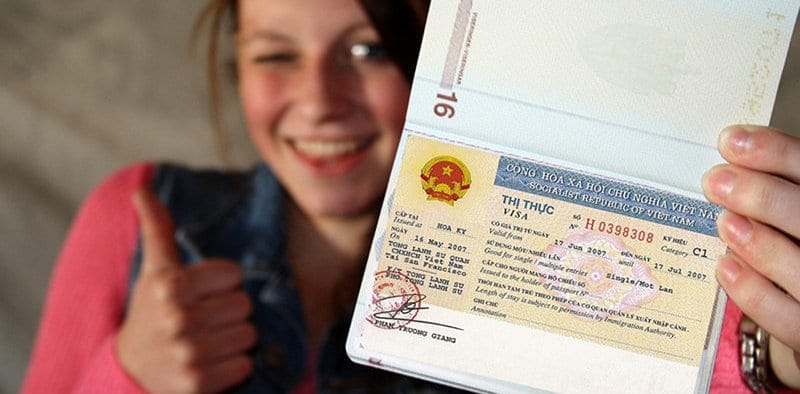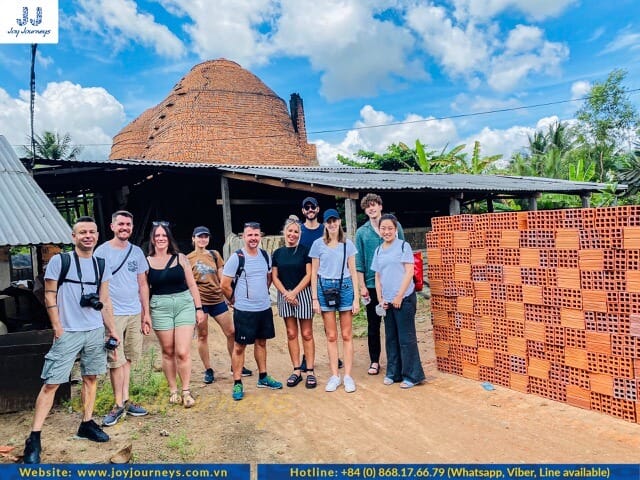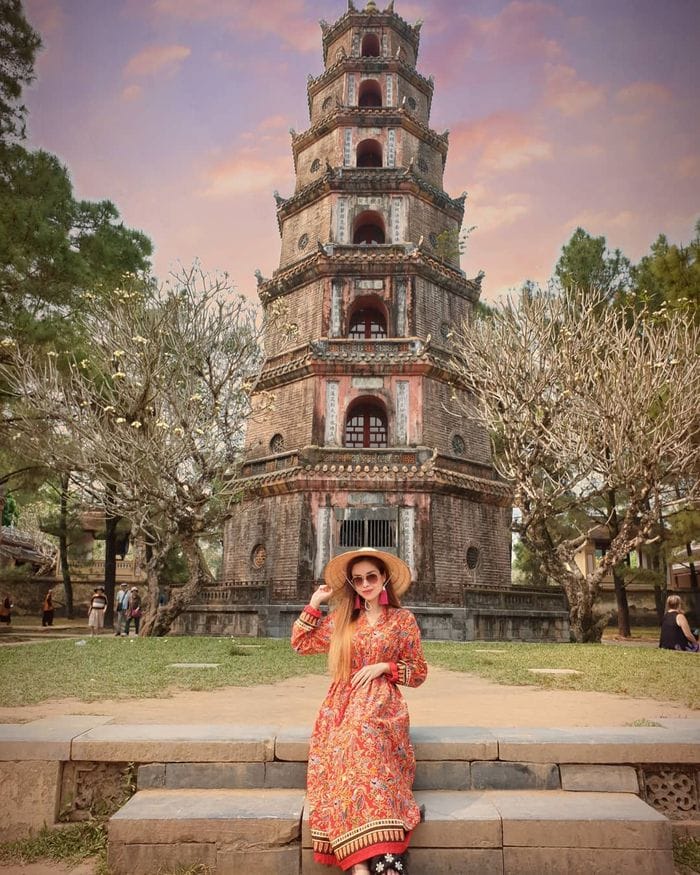Discover the ultimate Vietnam packing list – essential tips and must-have items to make your trip unforgettable. From clothing to travel documents, ensure you’re fully prepared for your Vietnamese adventure.
Get ready to explore the captivating beauty of Vietnam’s tropical paradise. We’ll help you craft the perfect packing list to ensure a seamless and memorable journey through this stunning destination.
Contents
Vietnam Packing List: Travel Documents and Financial Essentials
Planning a trip to Vietnam is thrilling but requires careful preparation. In this guide, we’ll navigate you through vital aspects of travel documents and financial readiness for a seamless and worry-free exploration.
Travel Documents
Before you even set foot in Vietnam, it’s essential to have your travel documents in order. These documents are your gateway to this mesmerizing destination, and neglecting them can lead to unnecessary complications.
Passport & Visa
Vietnam requires a valid passport with at least six months of validity beyond your planned departure date. Ensure your passport meets this requirement before you leave.
Additionally, travelers must obtain a visa to enter Vietnam. The process varies depending on your nationality, so it’s crucial to check the specific requirements for your country.
Vietnam e-visa: To streamline the visa application process, consider applying online. Vietnam’s e-visa system has made it remarkably convenient for travelers. With a 90-day duration and the option for multiple entries, it’s a traveler’s dream come true.
To streamline the visa application process, consider applying online or through the Vietnamese embassy or consulate in your home country.
See details: evisa.xuatnhapcanh.gov.vn

Flight Tickets
Once your travel documents are sorted, the next step is managing your flight tickets.
Book your flights well in advance to secure the best deals and preferred schedules. Keep an eye out for promotions and discounts.
Consider flexibility in your travel dates; this can often lead to cost savings.
It’s advisable to have digital and physical copies of your flight tickets, as well as your itinerary, readily accessible during your trip.
Getting an eSIM to ensure yourself a seamless connectivity
Managing Finances for Your Vietnam Adventure
Sound financial planning is vital for a stress-free journey. Vietnam is a destination that offers a wide range of experiences, and having your finances in order will ensure you can make the most of your time here.
Cash & Credit Card:
In Vietnam, cash is essential, with the Vietnamese Dong (VND) as the primary currency. Having cash on hand, especially in rural areas, where card payments are less common, is crucial.

ATMs are readily available in major cities and tourist destinations, simplifying cash withdrawals. However, remember to inform your bank of your travel plans to prevent card issues abroad.
While credit cards are widely accepted in cities and tourist hubs, it’s wise to carry cash for small expenses and in areas with limited card acceptance.
Booking Hotels in Vietnam
Finding the right accommodation is an integral part of your travel experience. Vietnam offers a wide range of options, from luxurious resorts to budget-friendly hostels.
Consider your travel style, budget, and preferred amenities when selecting accommodation.
Popular booking platforms like Booking.com, Agoda, and Airbnb can help you find the perfect place to stay. Read reviews and check ratings to ensure a comfortable and enjoyable stay.
Make your hotel reservations in advance, especially during peak tourist seasons, to secure the best choices and rates.
In conclusion, meticulous preparation of your travel documents and finances is the cornerstone of a successful and enjoyable trip to Vietnam. By adhering to these guidelines and staying organized, you’ll be well-prepared to embark on your Vietnamese adventure with confidence and peace of mind.
Familiarize with common scams in Vietnam to have a enjoyable journey
Planning for Your Memorable Vietnam Trip
Embarking on a journey to Vietnam is exhilarating, but effective planning is essential for a seamless and unforgettable experience. In this guide, we’ll provide valuable insights and tips for meticulous trip planning in Vietnam.
Which Season(s) Will It Be?
Deciphering Vietnam’s Varied Climates
Vietnam’s unique geography bestows upon it diverse climates across regions. Understanding these weather variations is essential as they profoundly influence your packing choices.
In the North, there are four distinct seasons, featuring chilly winters and sultry summers. Central Vietnam boasts a tropical climate with a pronounced rainy season from September to February. The South, on the other hand, maintains a tropical climate throughout the year, with a wet season from May to October and a dry season from November to April.
Packing Tip:
Thoroughly research the weather forecast for your specific destinations and travel dates. This will enable you to pack accordingly and include versatile clothing items suitable for varying conditions.

Where Are You Going?
Tailoring Your Packing List to Your Destinations
Vietnam offers a plethora of destinations, each possessing its unique charm and climate. Whether you’re exploring vibrant urban centers like Hanoi and Ho Chi Minh City, unwinding on the pristine beaches of Phu Quoc, or embarking on adventurous treks in Sapa, your packing list should align with the nature of your chosen destinations.
If you want to go on a tour of Saigon, Củ Chi Tunnels, or any tours in the Mekong Delta, please contact Joy Journeys.
Packing Tip:
Conduct in-depth research about your destinations, paying close attention to their climate patterns and cultural norms. Pack clothing and gear that are suitable for the activities you plan to engage in.
How Long Will You Be Traveling?
Optimizing Your Luggage for Trip Duration
The duration of your stay in Vietnam significantly influences your packing decisions. For shorter getaways, you have the luxury of packing lighter. However, for extended trips, efficient packing becomes paramount.
Packing Tip
Develop a comprehensive packing list that includes daily outfits and essential items. For longer journeys, contemplate options such as laundry services or packing travel-sized detergent to maximize clothing options.
What Activities Are You Going to Do?
Crafting Your Packing List for Specific Activities
Vietnam caters to an array of activities, from cultural exploration to outdoor adventures. To ensure you’re well-prepared, it’s imperative to consider the specific activities you intend to partake in.
Packing Tip
For city exploration, prioritize comfortable walking shoes, lightweight clothing, and a compact day bag for your essentials.

If you’re planning treks or hikes, invest in sturdy hiking boots, moisture-wicking clothing, and a reliable backpack.
Beach enthusiasts should include swimwear, sunscreen, and breathable cover-ups in their packing list.
In conclusion, planning meticulously for your trip to Vietnam revolves around factors such as climate, destination choices, duration, and planned activities. By tailoring your packing list to accommodate these variables, you’ll embark on a remarkable and hassle-free journey through Vietnam, creating cherished memories along the way.
Take a note of Vietnamese police information to call in case of emergency
Your Essential Clothing Guide for Vietnam
Selecting the appropriate clothing for your trip to Vietnam is essential for comfort and cultural respect. In this guide, we will provide detailed recommendations for clothing items that suit Vietnam’s diverse climate and cultural norms, catering specifically to both female and male travelers.
Vietnam Packing List for Women
Tailoring Clothing Advice for Female Travelers
Vietnam’s climate varies, and it’s crucial for female travelers to have a well-thought-out packing list to stay comfortable and culturally aware.
- Lightweight Clothing: Opt for breathable fabrics like cotton and linen. Dresses, skirts, and lightweight pants are great choices. Long skirts or dresses can also be respectful in temples.
- Modesty is key: While you have the freedom to wear your favorite clothes throughout Vietnam, it’s important to remember that in sacred places like churches and temples, where customs and traditions hold great significance, choosing clothing that covers your shoulders and knees is a sign of respect and cultural sensitivity.

- Swimwear: Pack a swimsuit if you plan to hit the beach. Remember, revealing swimwear is more suitable for tourist areas than local beaches.
- Footwear: For exploring Vietnam, comfortable walking shoes are a must. If you’re planning on hiking, sturdy hiking boots or trail shoes are essential. And for those beach visits in Vietnam or leisurely strolls through cities, don’t forget to pack comfortable flip-flops or sandals.
- Layers: Vietnam’s weather can be unpredictable. Bring a light jacket or cardigan for cooler evenings and rain.
Vietnam Packing List for Men
Tailoring Clothing Advice for Male Travelers
Male travelers also need to consider the climate and cultural norms when packing for Vietnam.
- Lightweight Clothing: Opt for comfortable, breathable clothing. Lightweight shirts, shorts, and comfortable pants are ideal.
- Modesty and Respect: Similar to female travelers, men should dress modestly. Avoid overly revealing clothing and consider wearing pants when visiting temples or religious sites.
- Swimwear: If you plan on swimming, pack appropriate swim trunks. Like women, choose more modest swimwear for local beaches.
- Footwear: Comfortable walking shoes are essential for exploring cities and sites. For hiking or trekking, invest in sturdy hiking boots or trail shoes.
- Rain Gear: Vietnam’s weather can be unpredictable. It’s wise to have a compact, travel-friendly rain jacket on hand.
Selecting appropriate attire for your Vietnam journey is crucial for comfort and cultural respect. Prioritize lightweight, modest clothing suitable for the diverse climate. Please note that wearing short skirts, halter tops, or similar attire is not allowed when visiting churches, pagodas, and temples. These guidelines ensure your comfort and demonstrate respect for Vietnam’s cultural heritage.
Tipping in Vietnam: A Different Perspective
In Vietnam, the act of tipping, as commonly practiced in Western countries, is not the norm, particularly for everyday services like dining at local restaurants or interacting with hotel staff. Vietnamese people are renowned for their warm hospitality and are not accustomed to receiving tips as part of their income.
However, as tourism continues to thrive in Vietnam, tipping has gained traction, especially in tourist-centric areas and higher-end establishments. Here are some insights into navigating tipping with cultural sensitivity in Vietnam:
- Restaurant Tipping: In local eateries and street food stalls, tipping is not expected nor considered a common practice. Menu prices typically include service charges. In more upscale restaurants, some patrons choose to leave a small tip, usually around 5-10% of the bill, especially when the service has been outstanding. Nevertheless, this is entirely optional.
- Hotel Staff: While tipping is not mandatory, it is appreciated by hotel employees. You can offer a small amount as a token of gratitude for excellent service, typically ranging from 20,000 to 50,000 VND per night. For concierge services or assistance with luggage, a tip of 10,000 to 20,000 VND is customary.
- Tour Guides and Drivers: Tipping is more common in the tourism sector. If you’re on a guided tour, consider tipping your guide around 100,000 to 200,000 VND per day, depending on the quality of service. For drivers accompanying guided tours, a tip of 50,000 to 100,000 VND per day is a thoughtful gesture of appreciation.
- Spa and Wellness Services: Tipping for spa services is becoming expected, usually around 5-10% of the bill, if a service charge is not already included.
- Street Vendors and Taxis: It’s important to note that tipping is not a customary practice for street food vendors, and taxi drivers typically do not expect tips. However, rounding up the fare or leaving small change can be seen as a polite gesture.
- Charitable Giving: Instead of individual tipping, consider contributing to local charities or community-based projects as a way to give back to the community.
In Vietnam, the essence of gratitude is often conveyed through a simple “thank you.” While tipping is gradually becoming more common in certain tourist-oriented areas, understanding that it’s not a widespread practice will help you navigate these situations gracefully. Rather than focusing solely on tipping, embracing the local culture and expressing gratitude through words of thanks is often appreciated even more.
Conclusion
In conclusion, thoughtful packing, tailored to Vietnam’s climate and cultural norms, is vital for a successful trip. While tipping is uncommon, expressing gratitude through words and gestures enhances your experience in this welcoming nation.


Related Posts
Saigon’s “Flower Market Replica”: Where To Find Them
Ho Chi Minh City’s floral charm is not limited to its bustling wholesale markets. Imagine wandering through a place where vibrant petals, fragrant blooms, and the spirit of traditional Vietnamese markets come alive—without the overwhelming crowds. A flower market replica captures that magic, blending the beauty of fresh flowers with the charm of a curated, […]
Is it Safe to Travel to Vietnam Right Now? A Complete 2025 Guide
Vietnam has emerged as one of Southeast Asia’s most captivating destinations, drawing millions of visitors annually with its rich culture, stunning landscapes, and incredible cuisine. However, many travelers still ask: Is it safe to travel to Vietnam right now? This comprehensive guide provides you with everything you need to know about Vietnam travel safety in […]
Ho Chi Minh Cu Chi Tunnels Tour: The Ultimate Guide
The Cu Chi Tunnels stand as one of Vietnam’s most remarkable historical sites, offering visitors a profound glimpse into the ingenuity and resilience displayed during the Vietnam War. For travelers, a Ho Chi Minh Cu Chi tunnels tour represents an essential experience that combines education, adventure, and deep cultural understanding. This comprehensive guide will help […]